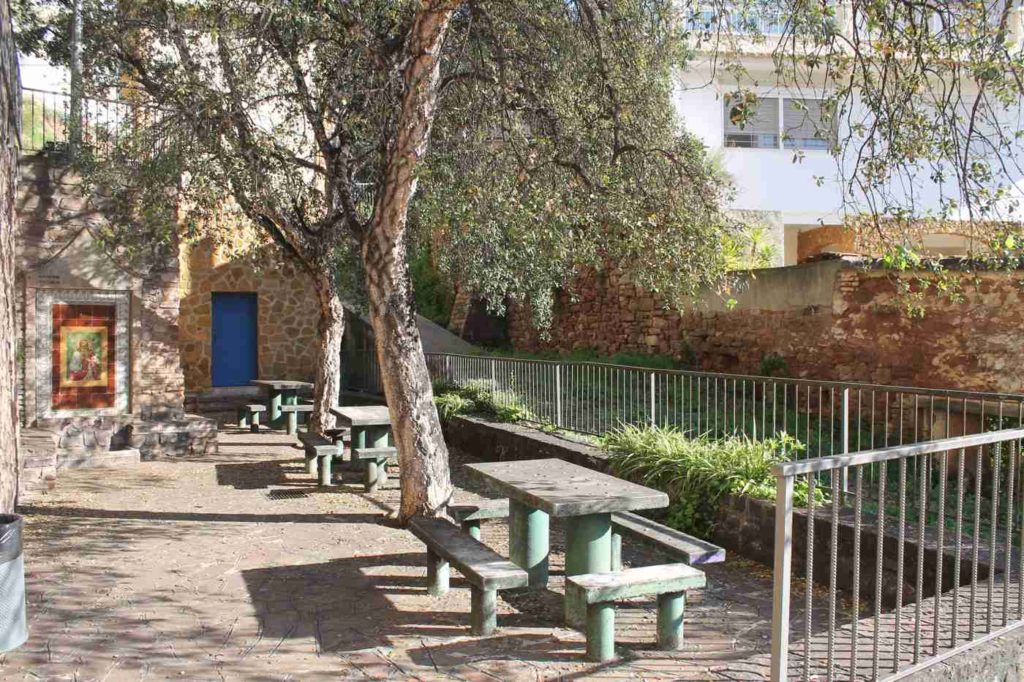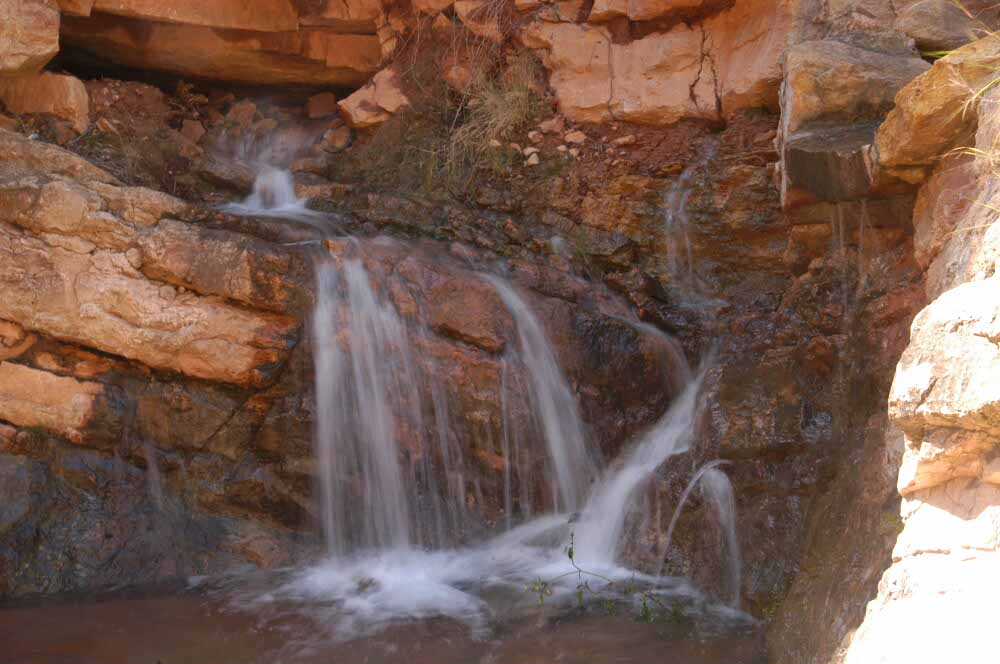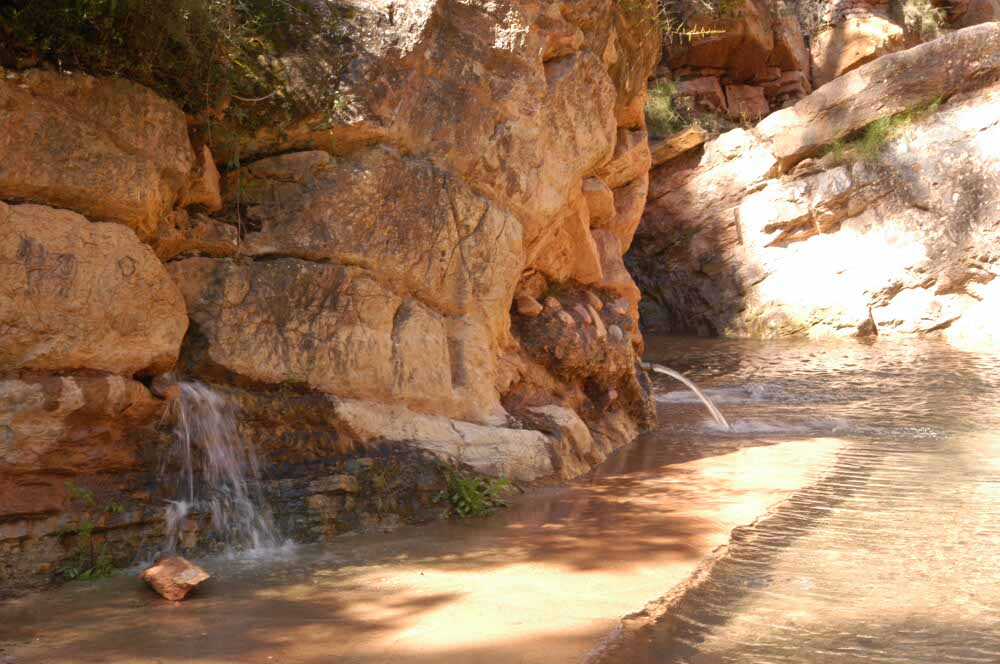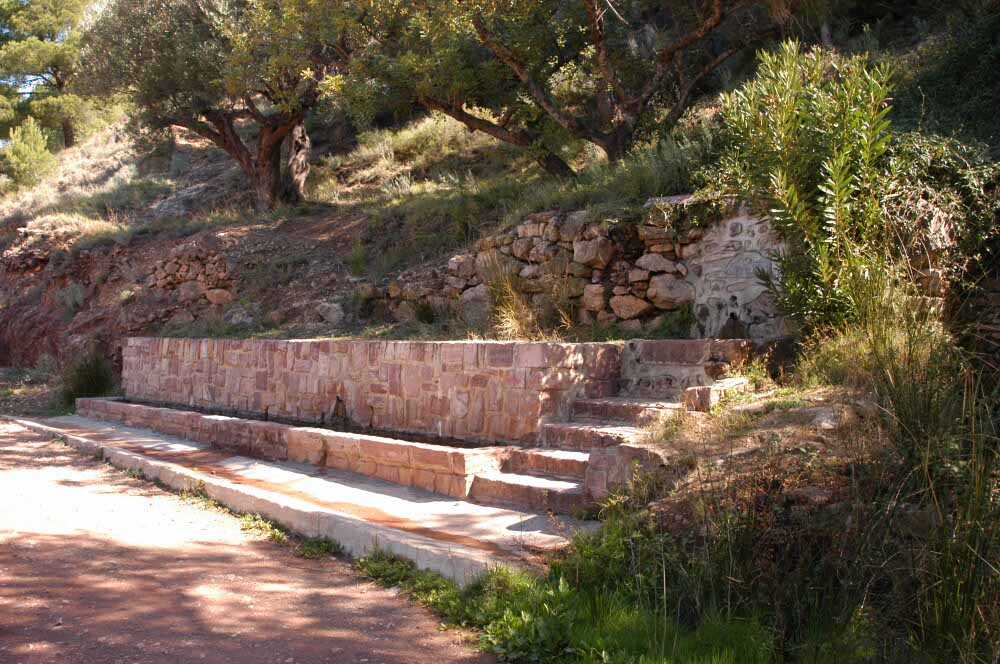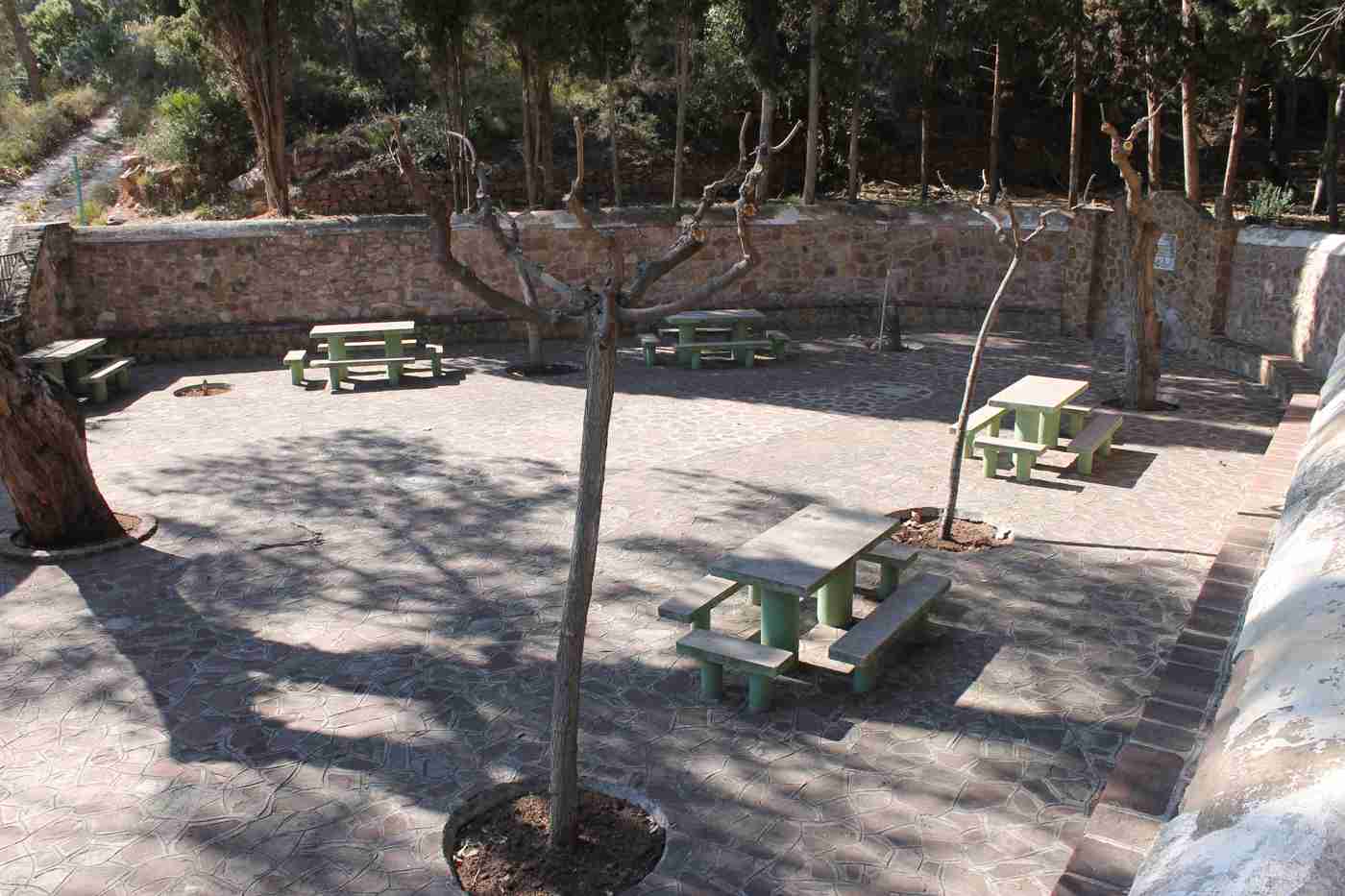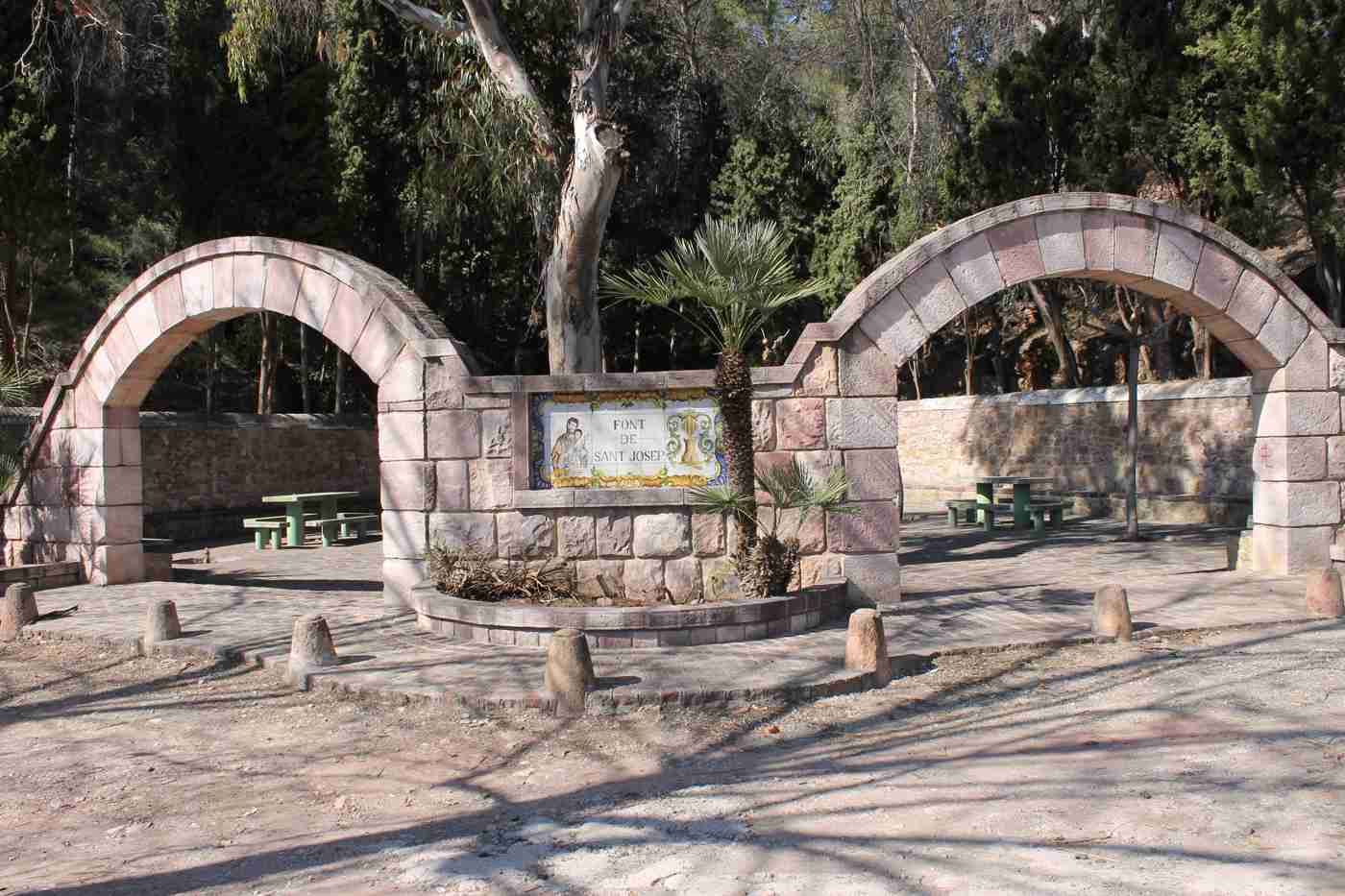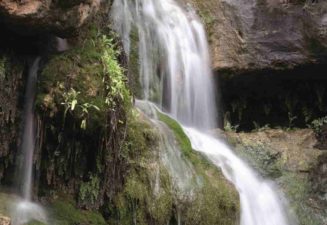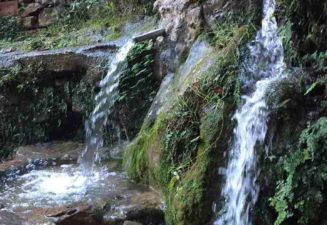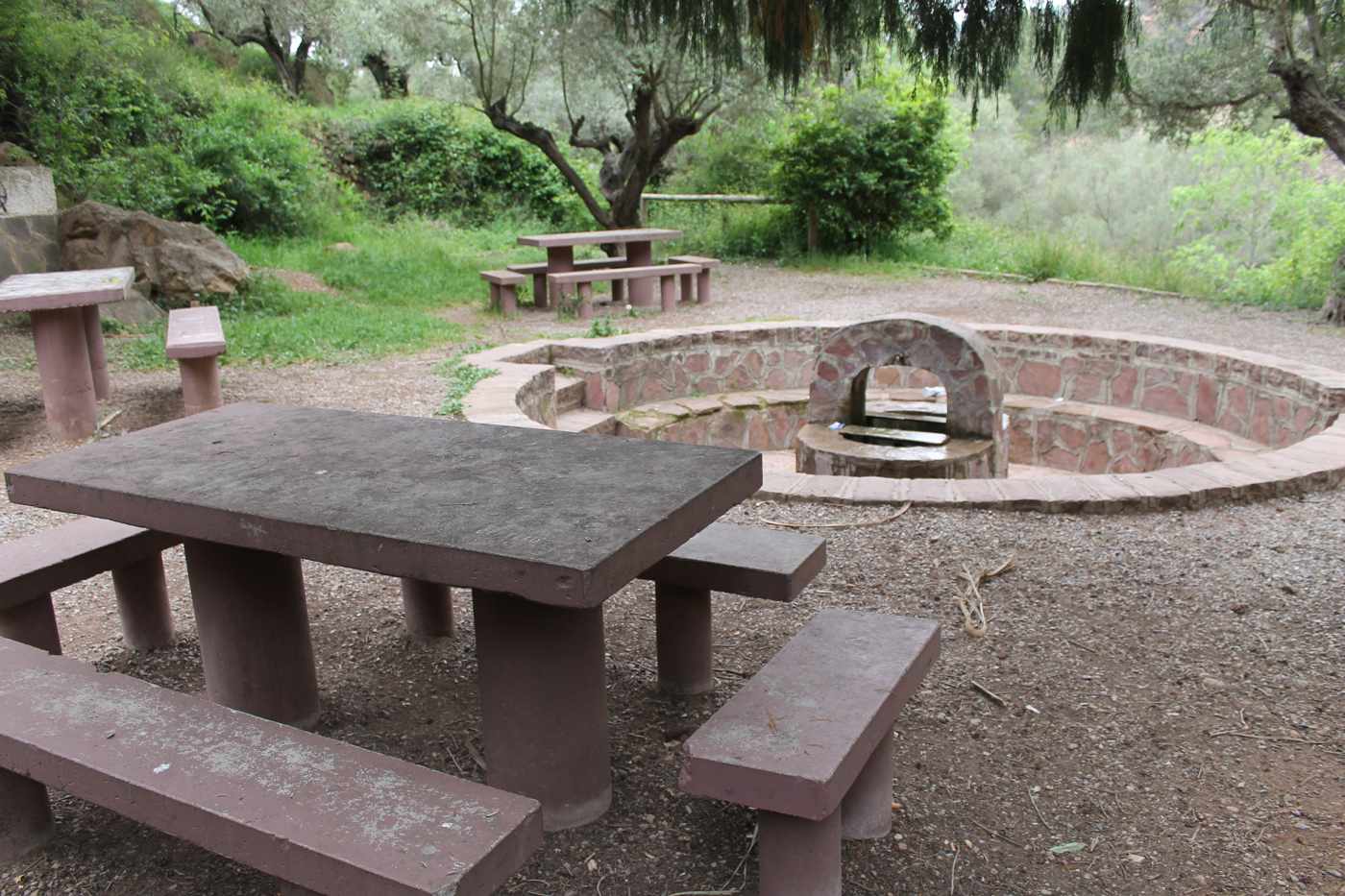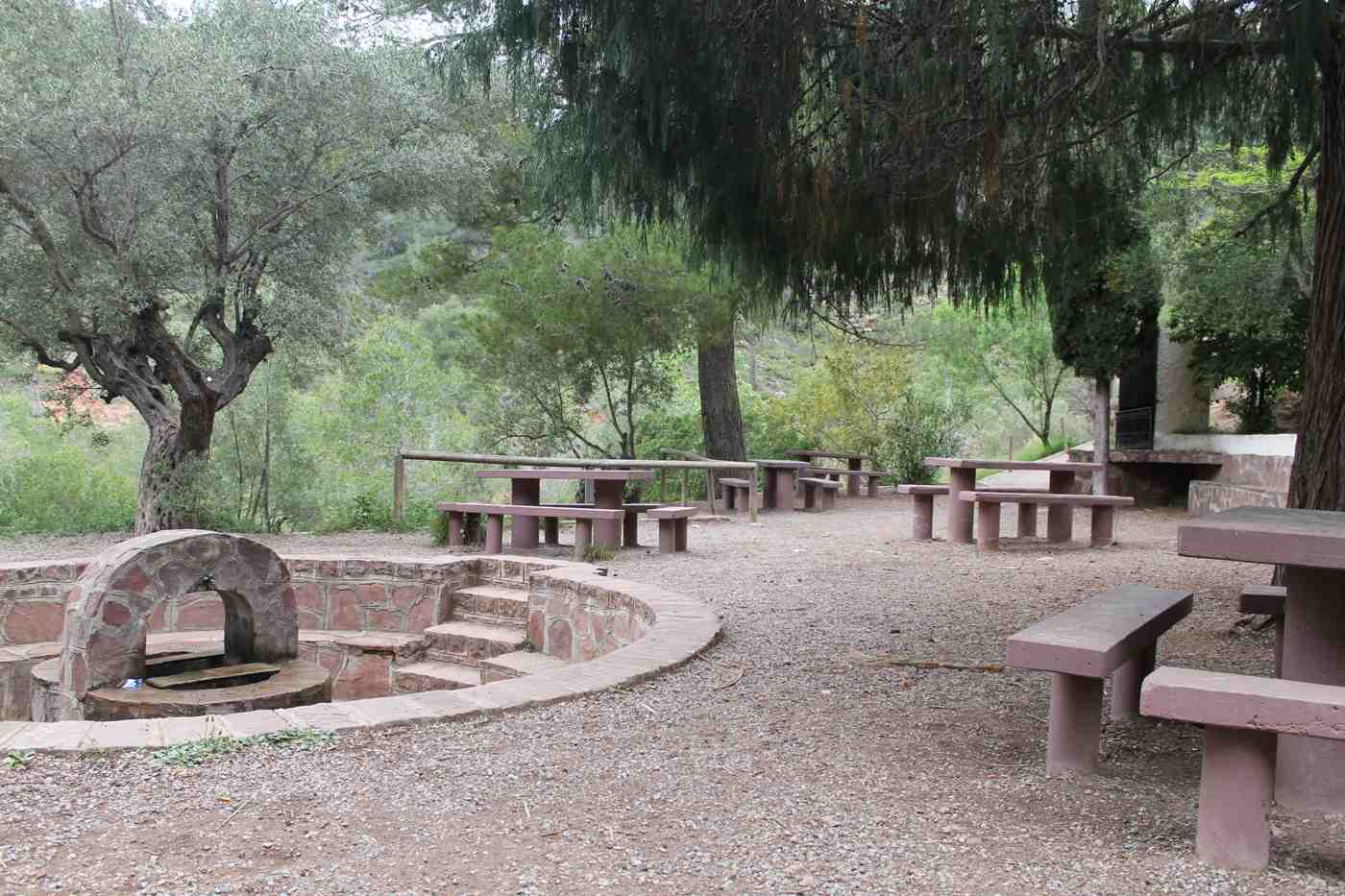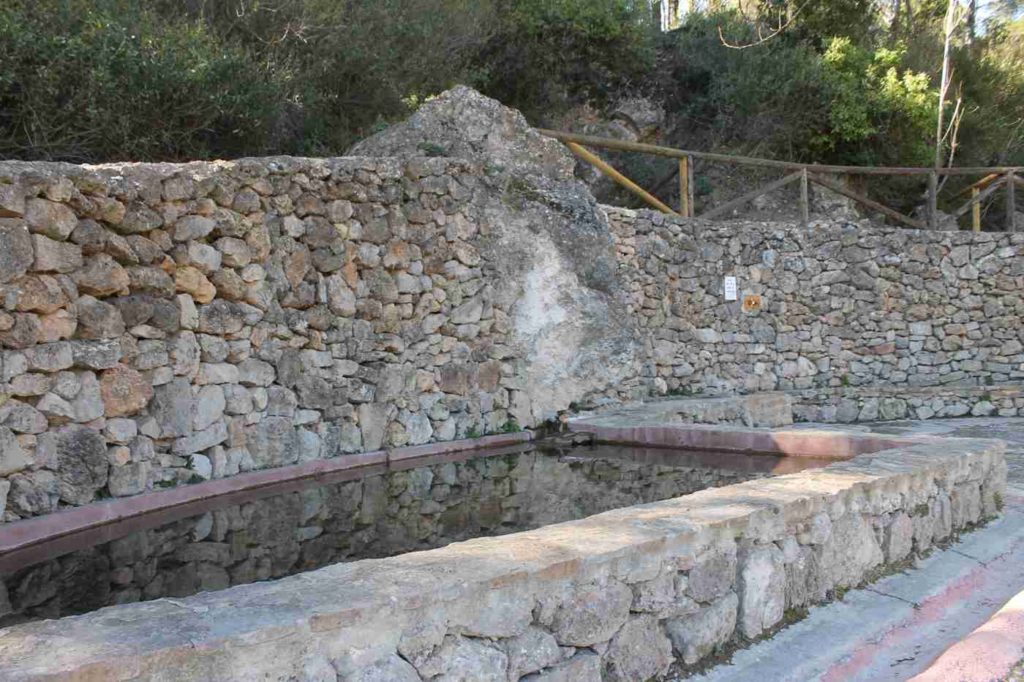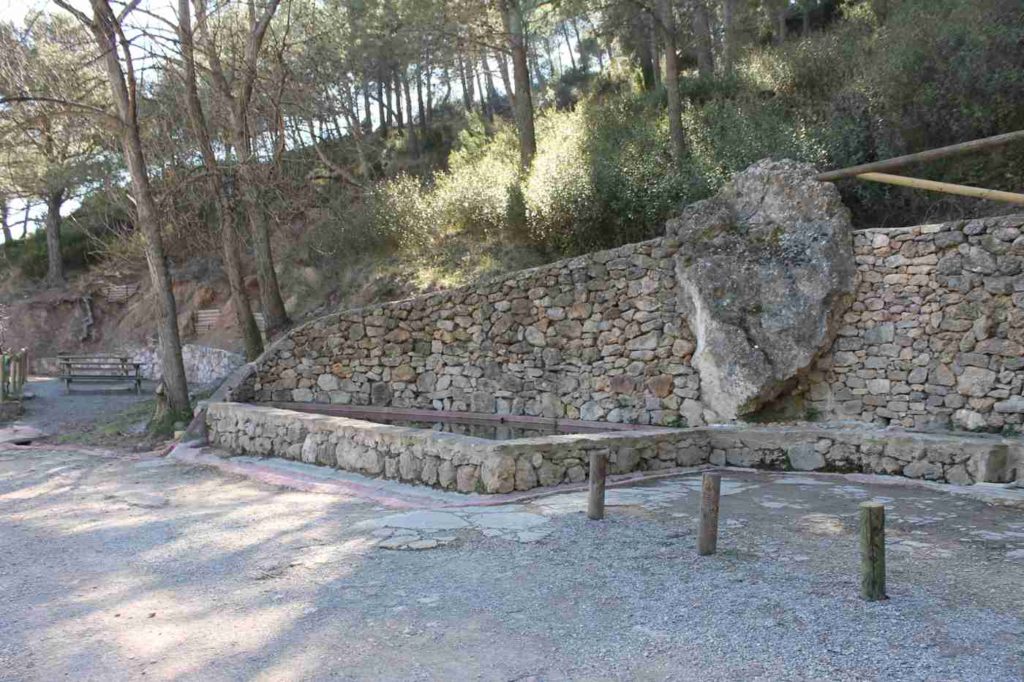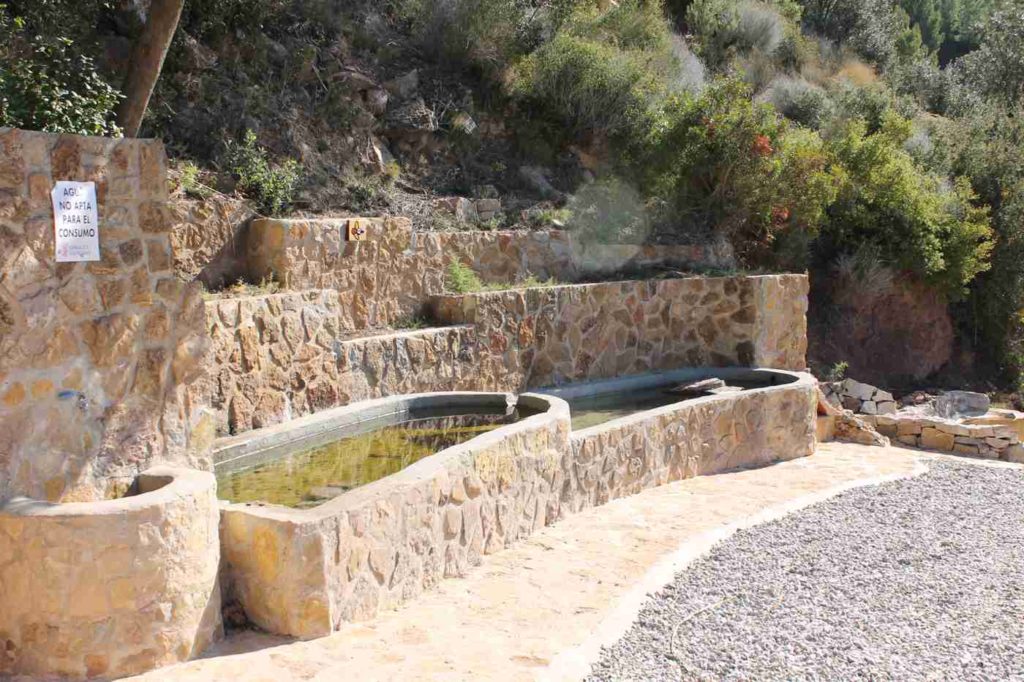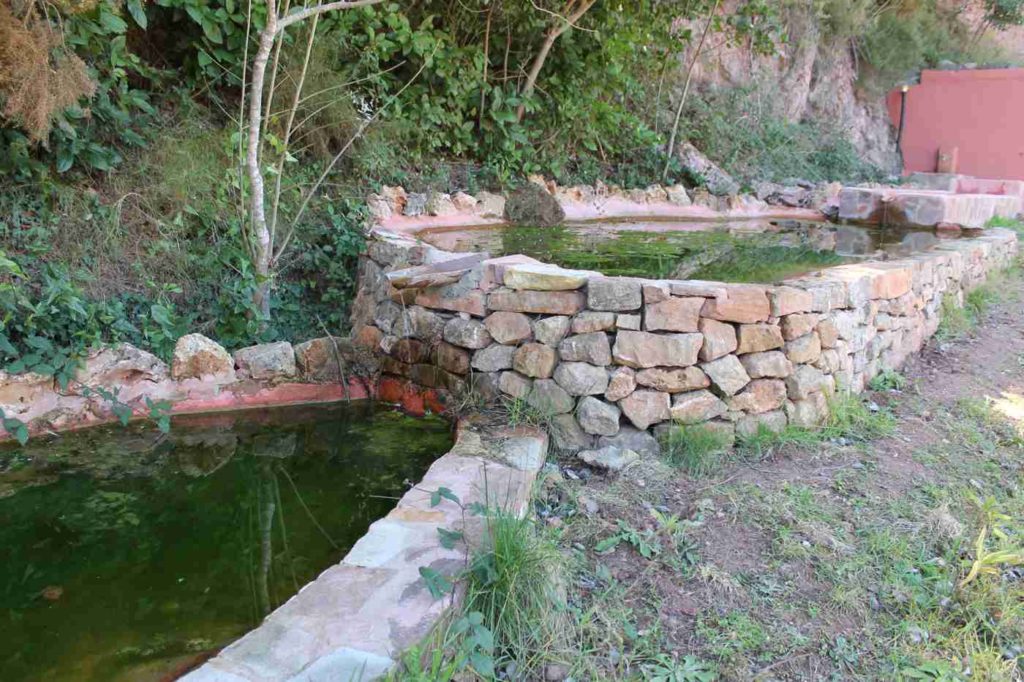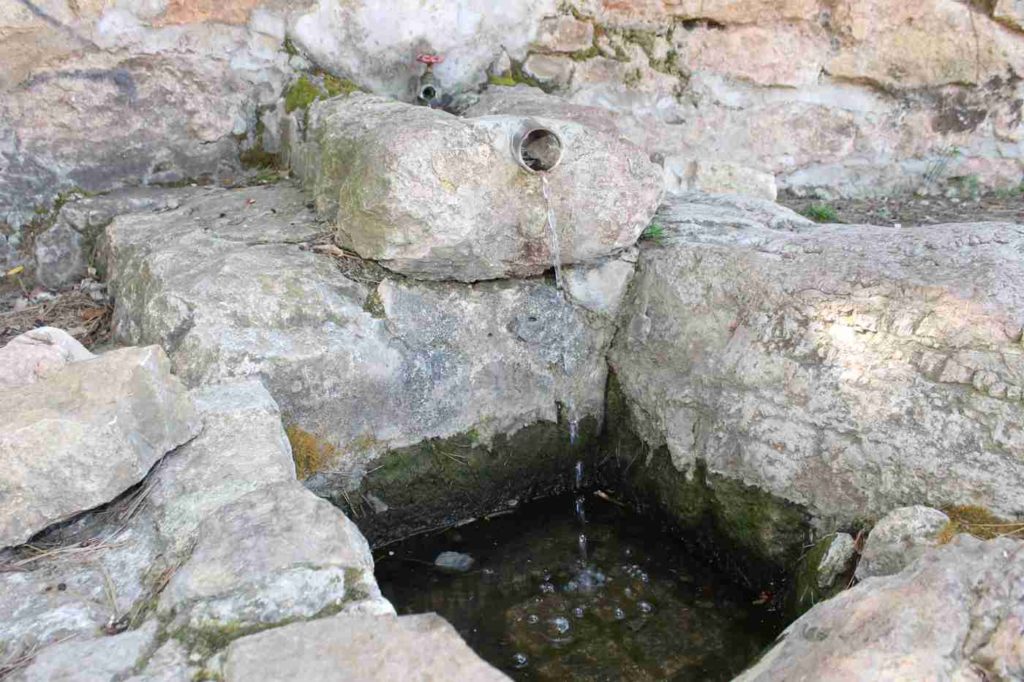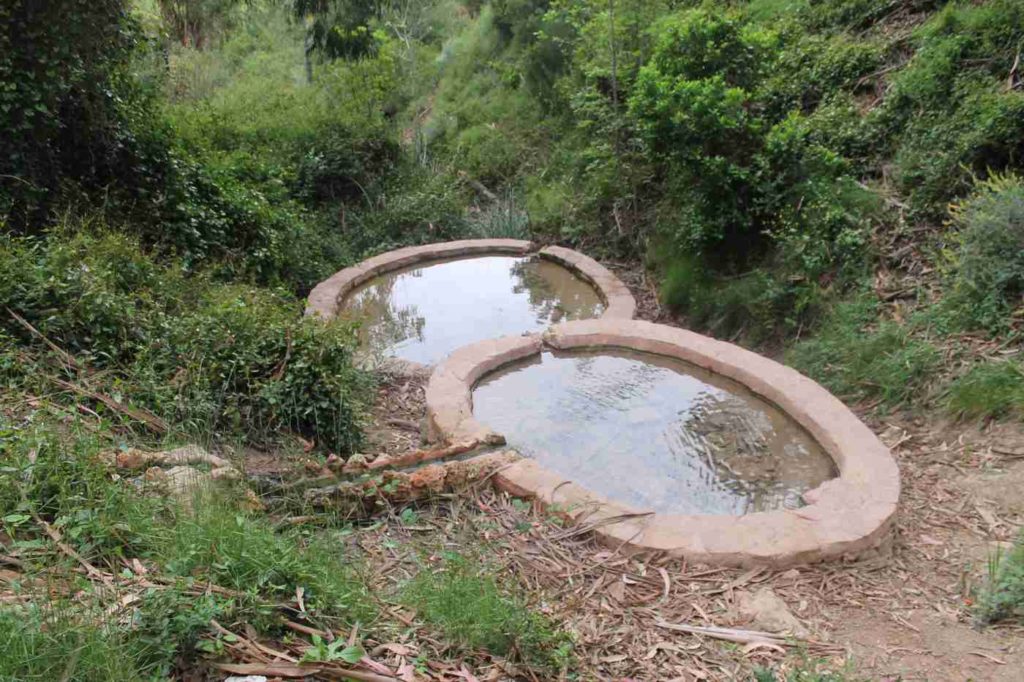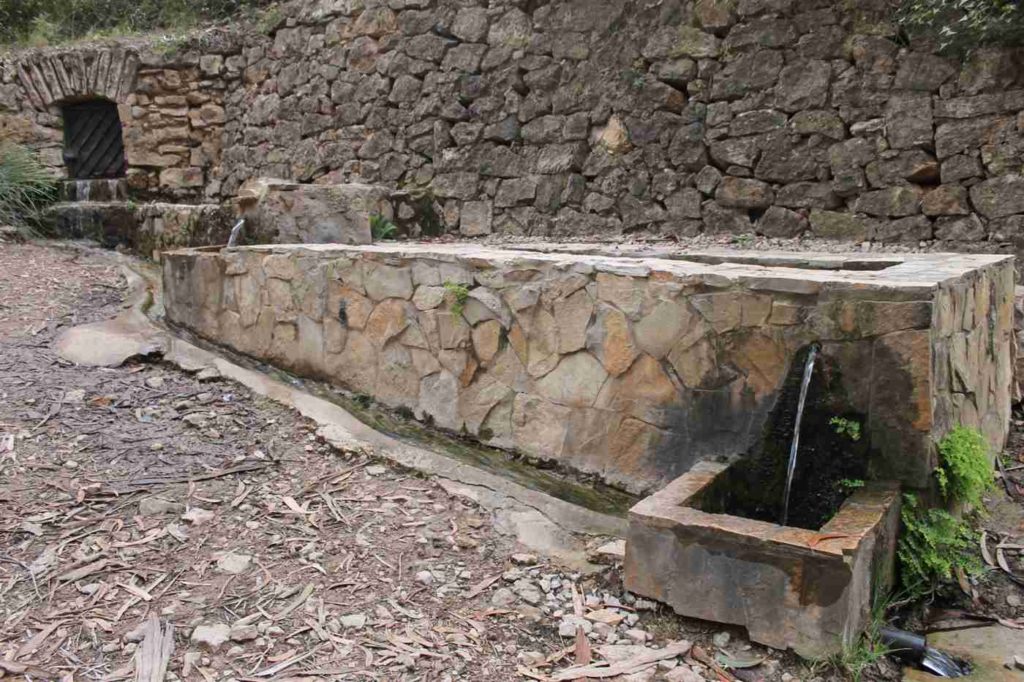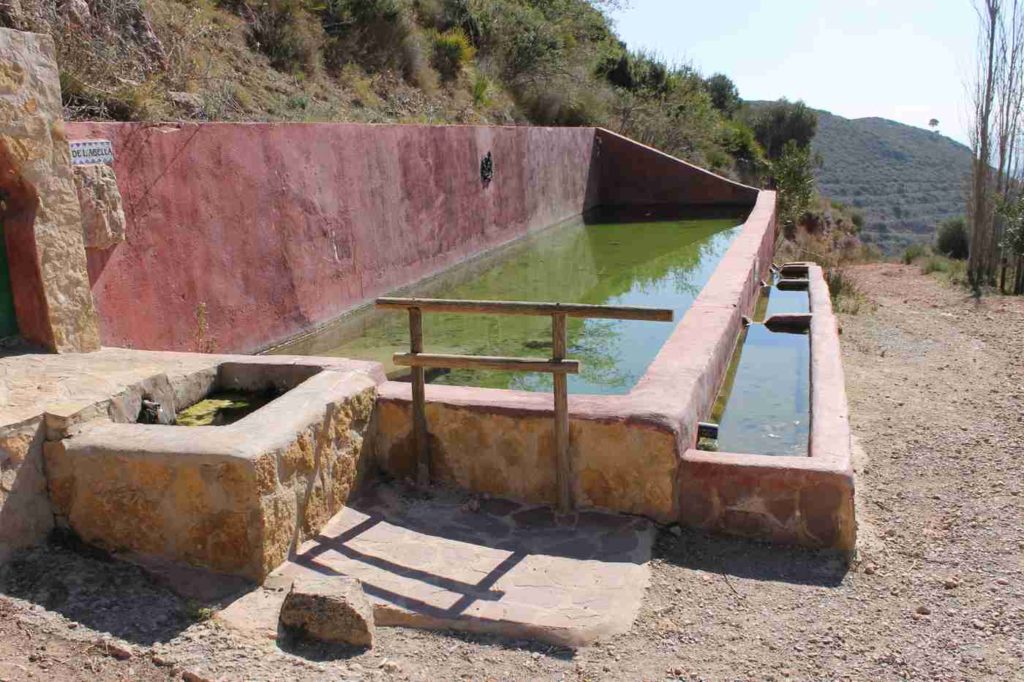Springs
Getting lost in the mountains and hearing in the distance the harmonious sound of water springing out is always a pleasure for the senses. Springs and groundwaters abound in Serra and they are an added value to its great natural attractions. Serra’s springs are the heart of several recreation areas where hikers and visitors can rest and linger. They are a source of pride for Serra’s people. Water from Serra’s springs is famous in València and the neighbouring towns thanks to doctor Peset, who analysed it and highlighted its great qualities. But it’s also famous due to one of the old trades with more tradition in Serra and its mountains: the aiguaders.
Aiguaders would take the water from the spring of El Berro, El Llentiscle and L’Ombria. They would fill big clay jugs, put them in carts and then they would go door to door selling water, not just in the city but also in the surrounding villages. “They brought the water from Serra(…) in jugs buried in pine leaves those weekly carts” remembered the great Valencian poet Vicent Andrés Estellés. This trade has diluted with the passing of time until disappearing completely. However, it remains deeply rooted in the living memory of Serra’s people and the families that used to live off it. Because the trade of the aguaders actually remained active for centuries, even when carts and horses had been replaced by trucks and vans.
There are more than thirty natural springs within the municipality of Serra:
Spring of La Salut
The spring of La Salut is within the town limits, at the end of La Fonda Street, and underneath majestic cork oaks. There is a small picnic area next to it, with tables and benches. Above the water fountain, there is a ceramic altarpiece which represents the Sacred Heart. It dates back to the thirties of the 20th century and it has been declared as a relevant local heritage.
It is parts of Serra’s heritage itinerary and marks the end of itinerary number 3 (Rebalsadors)
Spring of Deula
It is located to the west of Serra, very close to town, and at the foot of the Gorrisa mountain. It is a natural spring, and we highly recommended you visit it after raining: you will see how water cascades between the rocks. The spring of Deula is 360 metres above the sea level and it has a small recreation area with tables and benches.
It is part of the hiking itinerary number 2, (Gorrisa). It is also the setting for the theatrical tour ‘Discover the magic plant of Sàngana’. To visit it, start at La Serrà Avenue and carry on forward, either by bicycle or on foot.
Spring of Potrillos
The spring of Potrillos is located to the west of the Gorrisa mountain, 420 metres above the sea level and close to the col of Blanc. Here, the route branches off to the Porta Coeli charterhouse. The spring of Potrillos offers good views over the valley of Lullén, where the charterhouse is. This is the main attraction of Serra and it was founded on 1272.
The spring of Potrillos is located right next to a forestry track of the same name and it is part of the hiking route number 2 (Gorrisa). To visit it, follow the path of Potrillos, either by bicycle or on foot.
Spring of Sant Josep
It is located 400 metres above sea level, next to the CV-310 road and at the foot of the old building of La Llar. This space is currently under works to be used in the future as part of the equipment to promote tourism in town. At the spring of Sant Josep there are tables and benches for picnic, all sheltered by huge eucalyptuses.
Spring of Sant Antoni
It was built on 1920 in a neo-Baroque style. At both sides of it, there are stone benches to sit. It is located 410 metres above sea level, next to the CV-310 road, and a hundred metres from kilometre 24. The original name was spring of Rosa, in homage to the name of the Valencian writer Vicente Blasco Ibáñez’s house in Menton, France, where he lived in exile and where he died in 1928.
The spring is part of the long-distance path GR-10 and it is also near from itinerary number 3 (Rebalsadors).
Spring of Marianet
This is spring is at the heart of a unique scenery. It is located very close to the spring of Sant Antoni, right behind the sharp curve CV-310 takes. The waters spring out forming small cascades through the gully that carries its name. Ponds and puddles form underneath the spring and the sound of water can be heard long before you reach it.
The recreation area of the spring of Marianet is small and it is not easy to park nearby it.
It is part of the long-distance path GR-10 and of hiking itinerary number 3 (Rebalsadors).
Spring of L’Ombria
It is a mighty spring, located very close to the tower of Ria and Serra’s castle. During many years it supplied Serra’s people with water. The quality of the water was the reason for its commercialization by aiguaders (water traders). It used to be said that it was good for diabetes. The spring of L’Ombria is located in a very quiet zone, 440 metres above sea level and it has a recreation area with tables and benches.
The spring of L’Ombria is part of itinerary number 1 (Castell) as well as long distance path GR-10.
Spring of El Llentiscle
It is one of the most famous springs of Serra. It is named after the plant Pistacia lentiscus (lentisk or mastic), known as llentiscle. This bush is very abundant in the area and is typical of the Mediterranean flora characteristic of Serra Calderona. The spring is at 660 metres above sea level and in the northeast side of the Rebalsadors mountain. It used to supply aiguaders (water traders) due to the quality of its waters. It used to be said that it had therapeutic effects for the liver.
In the late 18th century, renowned naturalist Antoni Josep Cavanilles talked about the quality of the waters of the spring of El Llentiscle: “The spring of Lentisco can be found in a hollow place in relation to the peaks that surround it, whose fast slopes present only cliffs and naked rocks. At the foot of a humble hill, between sharp calcareous edges, a thread of water springs out, and it barely reaches four lines of diameter when in summer: it is crystal clear water, pure and excellent, and really wanted in the big city, where Serra’s people go to sell it”.
The spring of Llentiscle has a small recreation area and the long-distance path GR-10 passes right by it. You can access it following the forestry track from Serra: follow the CV-310, pass the spring of Sant Josep, and then take the second turn to the right.
Spring of El Poll
The spring of El Poll is located 680 metres above sea level, at the foot of a cliff of the Alt del Sapo mountain. It is 700 metres away from the spring of Llentiscle. It can be accessed from the Porta Coeli area, following the forestry track of spring of El Marge. The spring of El Poll is part of the long-distance path GR-10.
Spring of El Berro
The spring of El Berro is located at the bottom of a gully on the slopes on the mountain of La Mata. It is located 565 above sea level. It was one of the most used springs by aiguaders, who sold its waters to people in the city of València and the villages from the county of L’Horta. The water of El Berro was highly appreciated and famous because it helped to remove kidney stones.
The traditional path to it from Serra nowadays is part of itinerary number 3 (Rebalsadors) and of the GR-10 branch that goes through the town. You can access it following the forestry track from Serra: follow the CV-310 road, pass by the spring of Sant Josep, and then take the second turn to the right heading to the spring of Llentiscle. After passing by El Llentiscle, and 100 metres before reaching the spring of El Poll, the track takes a turn to the left. When you reach the col of La Moreria, the first bifurcation to the right will take you to the spring of El Berro.
Spring of El Marge
It is located 415 metres above sea level, very close to the country house of La Pobleta and the Porta Coeli charterhouse. The surroundings of the spring are very quiet and framed by large eucalyptuses. La Pobleta was the residence of the president of the Second Spanish Republic, Manuel Azaña, when the government moved to València during the Civil War. Around here it is not difficult to find a Carthusian monk walking around the monastery. Especially on Mondays, the day of waking for the order. It can be accessed from Porta Coeli taking the forestry track that starts at the end of CV-331.
Spring of L’Abella
The spring of L’Abella can be found in the immediate vicinity of the scenic viewpoint with the same name. You can access it from Serra following the CV-310 heading to València. After passing the cemetery, take the first turn to the right, towards the Porta Coeli charterhouse, and continue onto CV-328. When you get to the junction with CV-331, follow the forestry track of El Campillo and the cave of Soterranya, where you will find signs indicating the way. Follow the path up to the scenic viewpoint of L’Abella: from there you will have a good view of the plain of El Lluc, the Camp de Túria county and the gulf of València.
Spring of La Gota
It is located 425 metres above the sea level. Its flow is not very abundant, so the three small tanks that were built around it help to increase its water reserves. You can access it following the forestry track of El Campillo that heads to the cave of Soterranya.

